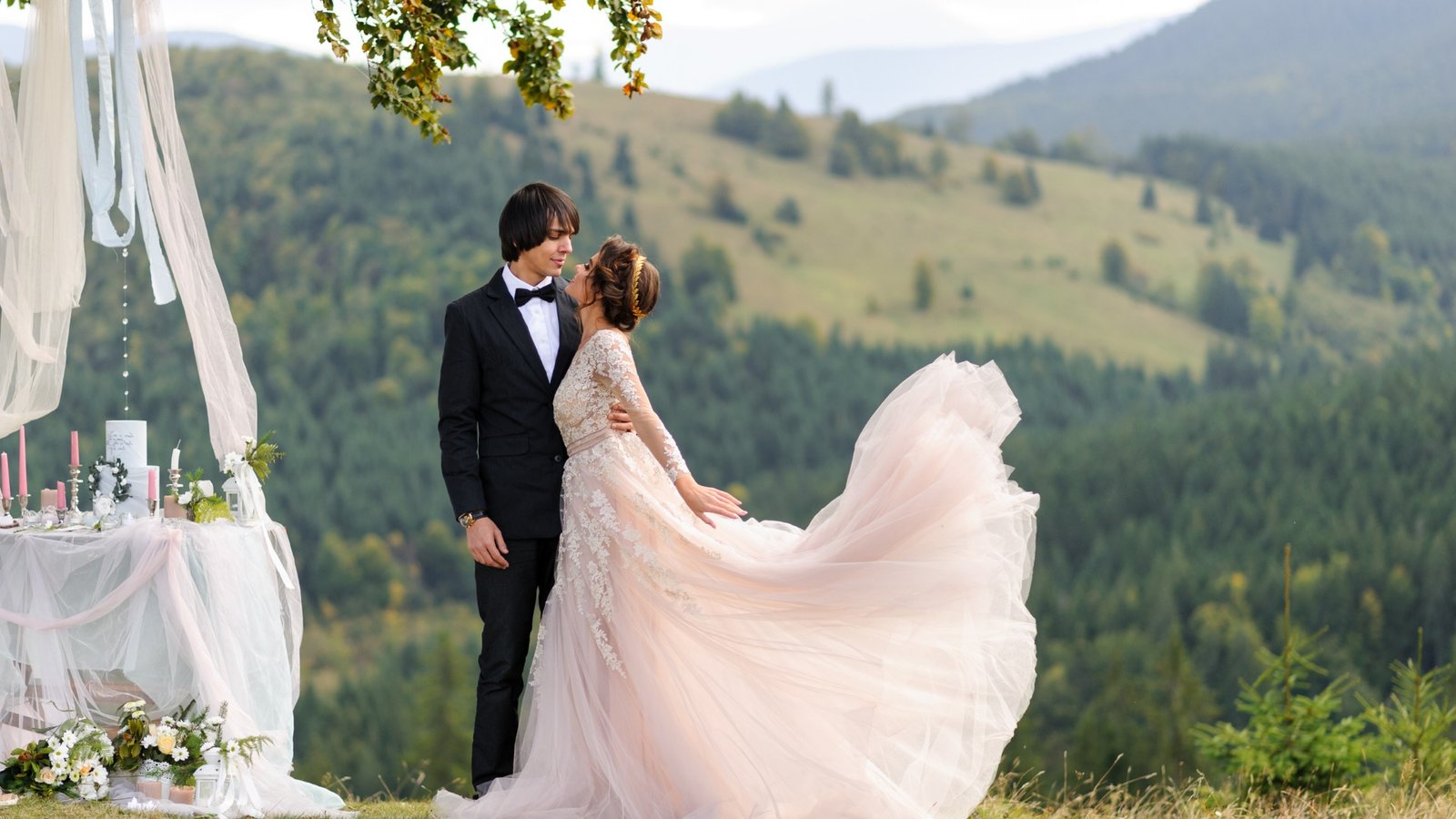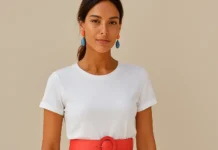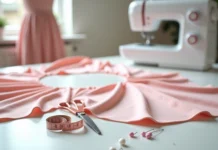How to Stitch a Princess Wedding Dress with Sleeves Step by Step
Every bride wants a princess wedding dress that fits perfectly. Sewing one with sleeves means focusing on the bodice neckline and skirt.
Satin or lace works great for that voluminous look. Whether you choose puff sleeves long sleeves or detachable sleeves the dress should highlight your natural waistline and silhouette.
This step-by-step guide shows you how to stitch a princess-style gown with elegance and ease. You’ll create a timeless look fit for your special day.
What is Waistline in a Dress?
The waistline is where the top of the dress meets the skirt. It’s usually the narrowest part of the body and helps shape the dress. Common waistline styles include natural waistline empire waistline and drop waistline. Each one creates a different look and feel.
What is Silhouette in a Dress?
The silhouette is the overall shape or outline of the dress. It’s how the dress looks from a distance. For example a princess silhouette has a fitted bodice and a full skirt. An A-line silhouette is shaped like the letter A with a gradual flare from the waist.
Choosing the Right Fabric for Your Princess Wedding Dress

- The fabric sets the tone for the whole dress. It controls the shape the structure and the way it moves. Picking the right one matters more than most think.
- Every princess wedding dress starts with fabric. It builds the silhouette adds weight or flow and helps the gown hold its shape. A well-chosen fabric highlights the waistline the neckline and the full skirt without needing extra support.
- Satin is smooth and heavy so it gives a strong shape. It works well for formal princess gowns with long trains and fitted bodices. Lace adds soft detail and looks timeless on sleeves bodices or even layered skirts.
- Tulle is light and sheer which makes it ideal for a voluminous skirt. It creates a soft fairytale effect without making the gown feel heavy. Using layers of tulle adds volume while keeping the dress easy to wear.
- You want your fabric to match the dress style and the wedding setting. Indoor weddings suit satin and lace. Outdoor weddings work better with lighter fabrics like tulle or chiffon.
- Some brides mix fabrics for contrast. A satin bodice with a tulle skirt can give balance. Lace sleeves with a plain satin base can show off detail without overdoing it.
- Choosing fabric is not just about look. It’s about how the dress moves how it fits and how you feel on your big day.
Best Fabrics for Princess Wedding Dress: Satin Lace and Tulle
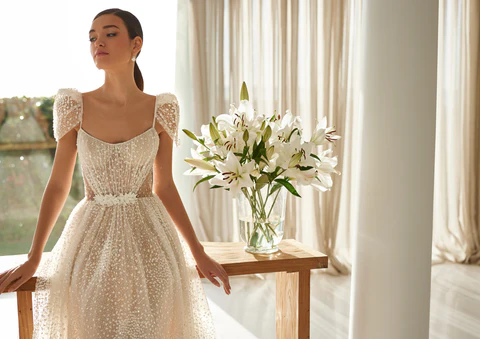
Satin is thick smooth and holds shape. It’s perfect for ball gowns with strong structure. It works well for fitted bodices and full skirts. Lace is soft and detailed. It adds texture to sleeves bodices and overlays.
It suits brides who want a classic bridal look. Tulle is light and sheer. It’s best for adding skirt volume without heaviness. Layering tulle gives a soft fairytale effect.
How Fabric Affects the Princess Dress Silhouette and Skirt Volume
Heavy fabrics shape the dress while light fabrics build volume.
Satin defines the waistline and gives structure.
Tulle creates a fuller skirt without stiffness.
Lace adds detail and softness without bulk. Choose based on look comfort and how the dress should move.
How to Stitch Princess Wedding Dress: Step-by-Step Guide

Stitching a princess wedding dress takes focus but it’s easier when you break it into parts. Start with a good pattern then move through the bodice sleeves and skirt one step at a time.
Preparing the Pattern for Princess Wedding Dress with Sleeves
Use a simple printed pattern designed for gowns with sleeves.
Cut out the pieces for the bodice sleeves and skirt.
Make sure the pattern matches your size and style.
Sewing the Fitted Bodice and Natural Waistline
Start by sewing the bodice panels together.
Use straight lines to shape the waistline and neckline.
The bodice should fit close to the body without gaps.
Attaching Puff Sleeves and Long Sleeves to Princess Wedding Dress
Puff sleeves give a soft rounded look.
Long sleeves offer full arm coverage and suit cooler weather.
Pin sleeves carefully before stitching to avoid puckering.
Creating the Voluminous Skirt: Using Tulle and Satin
Cut large panels of satin for the base.
Layer tulle on top for fullness and flow.
Gather the top edge of the skirt to fit the waist.
How to Finish Seams Neatly for a Professional Look
Trim loose threads after sewing.
Use zigzag stitches or bias tape to stop fraying.
Press all seams flat to keep the dress clean and sharp.
How to Attach an Overskirt to a Princess Wedding Dress

An overskirt adds extra volume and drama to a princess wedding dress. It can be worn for the ceremony then removed for the reception. If made right it blends with the dress and doesn’t pull on the bodice.
Step-by-Step Method to Attach Detachable Overskirts
- Start by making the overskirt using tulle satin or lace.
The top edge should match the waist of the dress.
Gather or pleat it to control the volume. - Add small loops or hooks along the inside of the overskirt.
Sew matching snaps buttons or ribbons to the waistband of the main dress. These should be hidden but easy to reach. - Try it on before the wedding day to check how it hangs.
Make sure the back falls evenly and the train stays in line.
Tips for Keeping the Overskirt Secure Without Damaging the Bodice
- Don’t stitch the overskirt directly into the bodice.
Use soft hooks buttons or ribbons that don’t pull or tear the fabric.
Avoid metal pins or zippers near delicate lace or satin. - If the bodice is tight add support fabric inside the waistline.
This spreads the weight of the skirt and keeps the dress balanced.
Keep the overskirt light so it moves well and stays in place. - An overskirt adds extra volume and drama to a princess wedding dress. It can be worn for the ceremony then removed for the reception. If made right it blends with the dress and doesn’t pull on the bodice.
Understanding the Difference Between A-Line and Princess Wedding Dresses
Both A-line and princess wedding dresses are popular bridal styles. They may look similar at first but they fit and flow differently. Knowing the difference helps you choose the right gown for your shape and setting.
Comparing the Silhouette and Design Elements
An A-line dress flares out slowly from the waist.
It forms a shape like the letter A.
The skirt is smooth and less full than a ball gown.
A princess dress has a fitted bodice and a full voluminous skirt.
It often uses tulle satin or lace for structure and flow.
The seams run from the shoulder down to the hem creating a sleek outline.
Princess-style gowns feel more formal and dramatic.
A-line dresses are simpler and suit both big and small weddings.
Which Style Suits Your Wedding Day and Body Shape
A-line wedding dresses flatter most body types.
They highlight the waist and give balance without adding bulk.
Great for outdoor or beach weddings where comfort matters.
Princess gowns suit brides who want a royal look.
They work best for tall or medium-height frames.
The full skirt and fitted bodice create a strong hourglass shape.
Choose the one that matches your body your setting and your dream wedding style.
How to Stitch a Princess Wedding Dress Easy for Beginners
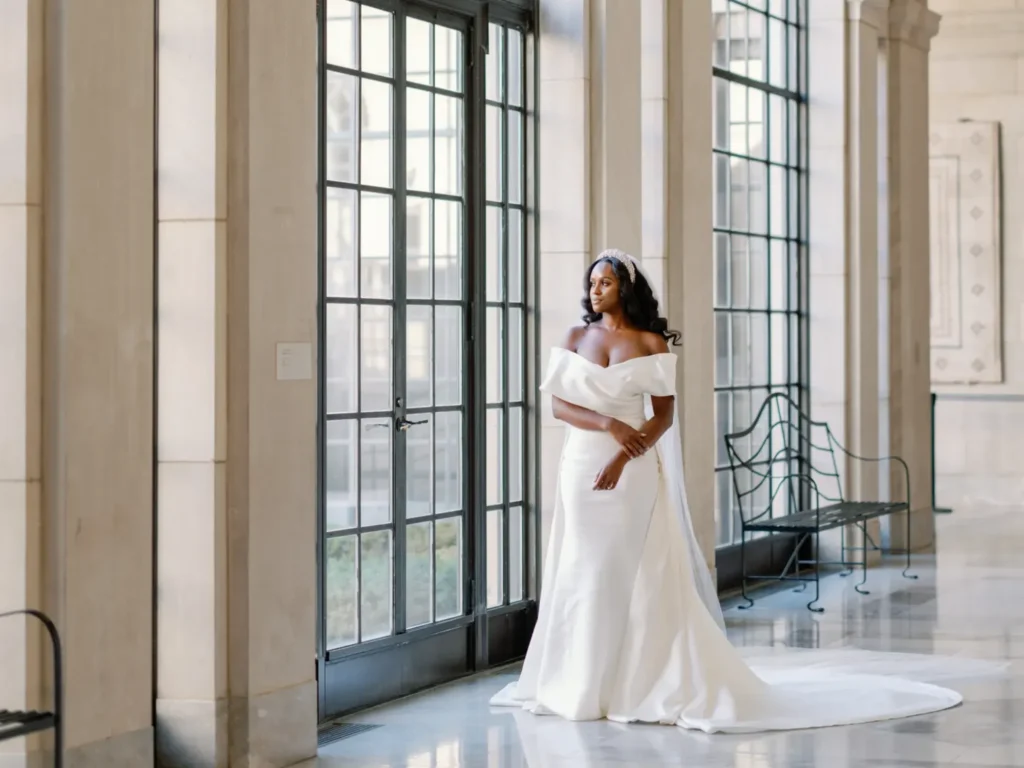
You don’t need to be a pro to sew a princess wedding dress. With basic sewing skills and the right pattern you can create a gown that fits well and looks beautiful. Start small and take each step slowly.
Basic Sewing Skills Needed for Princess Wedding Dress
Learn how to thread a machine and sew in straight lines.
Practice turning corners and sewing curves around the neckline and armholes.
Know how to pin fabric and press seams flat with an iron.
You’ll also need to gather fabric and attach layers.
This helps shape the skirt and sleeves.
Use simple tools like scissors measuring tape and fabric chalk.
Using Pre-Made Patterns and Simple Cuts
Choose a beginner-friendly pattern made for gowns.
Look for styles with a fitted bodice and basic skirt.
Avoid patterns with too many panels or sharp angles.
Follow the size chart and cut each piece carefully.
Label the pieces to avoid mix-ups.
Stick to easy fabrics like cotton blends before trying lace or satin.
How to Stitch a Frock for Beginners Step by Step
Start with the bodice and join the front and back.
Attach the skirt at the waist with straight stitches.
Add sleeves last and hem the bottom.
Finish by pressing seams and checking the fit.
This gives the dress a neat clean look.
Your first dress may not be perfect but it will teach you everything you need.
Fixing and Altering Wedding Dresses
Small damage or fit issues don’t mean the dress is ruined.
You can fix tears adjust seams and still keep the dress looking like new.
All it takes is care the right tools and steady hands.
How to Stitch a Ripped Princess Wedding Dress
First check where the fabric is ripped.
If it’s near a seam unpick the area around it.
Use small straight stitches to rejoin the fabric without pulling too tight.
For lace or tulle place a layer of netting behind the tear.
Then sew carefully along the edges.
This helps hide the repair and stops the rip from growing.
Techniques to Repair and Reinforce Seams
Use matching thread to avoid visible repairs.
Double-stitch weak spots around the waistline and bodice.
Zigzag or overlock the edges to stop fraying.
If the dress feels tight open the seam slightly and add a small panel.
This gives extra room without changing the look.
Always press the seams flat after sewing to keep the shape clean.
Tips to Maintain the Dress’s Beauty After Alterations
Store the dress on a wide hanger to protect the shoulders.
Keep it in a garment bag away from light and moisture.
Steam instead of ironing to remove wrinkles without damaging lace or satin.
Check beads buttons and zippers before the big day.
A quick fix now can save trouble later.
Handle the dress with care and it will stay picture-perfect.
FAQS
what is lilac wedding dress?
A lilac wedding dress is a light purple bridal gown, perfect for modern, romantic weddings. It symbolizes grace, renewal, and individuality, standing out from traditional white. Shades range from soft lavender to deep violet, fitting spring or bold wedding themes. Styles often feature 3D flowers, tiered skirts, or long trains for a unique look.
what is a cupcake wedding dress?
A cupcake wedding dress is a dessert made by arranging cupcakes into the shape of a bridal gown. Each cupcake is frosted to blend into the design, creating the look of a full dress. It’s often used as a centrepiece or served at bridal showers and weddings.
what is a cocktail wedding dress?
A cocktail wedding dress strikes a balance between formal and casual. It’s shorter than a floor-length gown but more polished than everyday wear. Usually knee- or midi-length, it’s made from fabrics like satin or velvet for both style and comfort.
what is a black mermaid wedding dress?
A black mermaid wedding dress is a fitted gown that hugs the body and flares below the knee, styled like a mermaid’s tail. Its black color makes a bold, sophisticated statement, breaking from traditional white gowns.
Conclusion
A princess wedding dress isn’t just a look it’s a feeling.
From the bodice to the skirt every stitch adds to the moment.
When done right the dress fits your style your body and your day. You don’t need to be an expert. Start with simple patterns and basic fabric.
Work step by step and stay patient.
Whether you’re sewing from scratch fixing seams or adding details the key is care. Pick fabric that matches the design.
Use clean lines and strong stitches. The result is a dress made with heart. One that fits like it should and looks how you always pictured. That’s what makes it yours.


